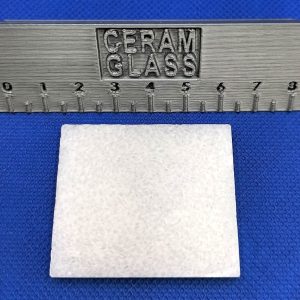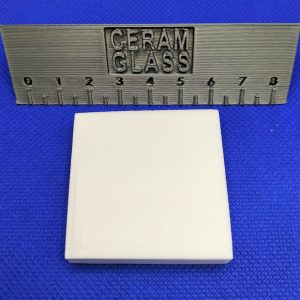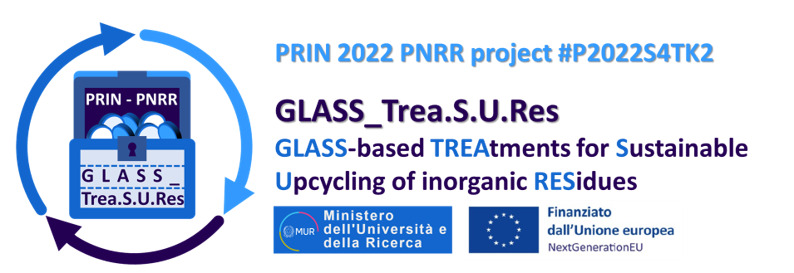LCD glass waste weak alkali activation
a. b.
b. c.
c.
Figure a. Opal glass with coarse LCD loading dried at 40°C for 7 days. Figure b. LCD glass activated with KOH after curing at 40°C for 7 days and firing at 900°C. Figure c. LCD glass foam activated with NaOH after curing and firing at 900°C.
The LCD glass waste was ground and sieved below 75 µm. The powder was activated with 2.5M solutions of NaOH and KOH and left to dry for 7 days in the stove at 40ºC. After mixing, coarse flakes of LCD glass (1mm<Ø<2mm) was added in the slurry activated with KOH. The samples obtained were fired in an oven at 900 ºC (heating ramp: 5 ºC/min). After firing, the sample activated with KOH appears translucent and extremily resistant (Figure b.), the one activated with NaOH forms an homogeneous and light foam with total porosity of 74.5% and compressive strength of 20.5 MPa (Figure c.). Figure a. instead shows a matrix of Opal glass fine powder activated with NaOH containing LCD coarse flakes after curing of 7 days at 40°C. The obtained material appears more opaque than sintered one and resists to boiling test, It can also be easily lapped to improve the gloss and reduce surface irregularities.

